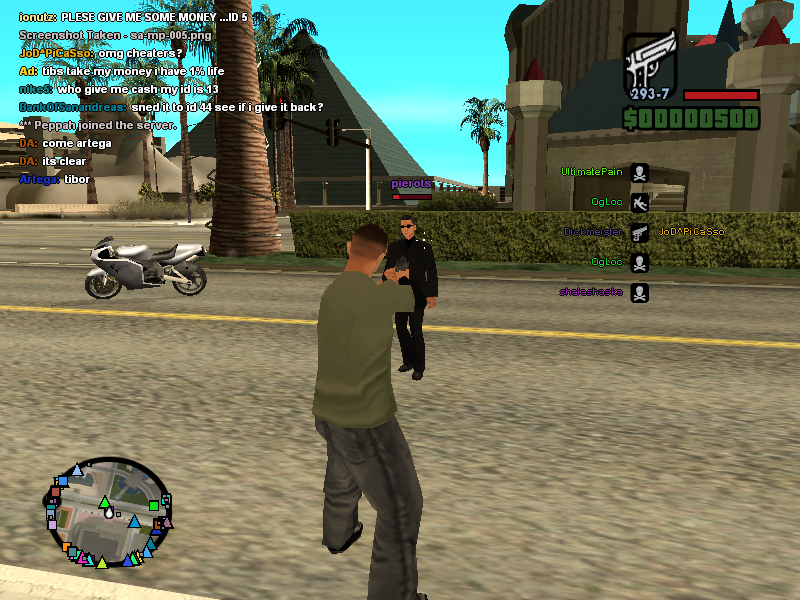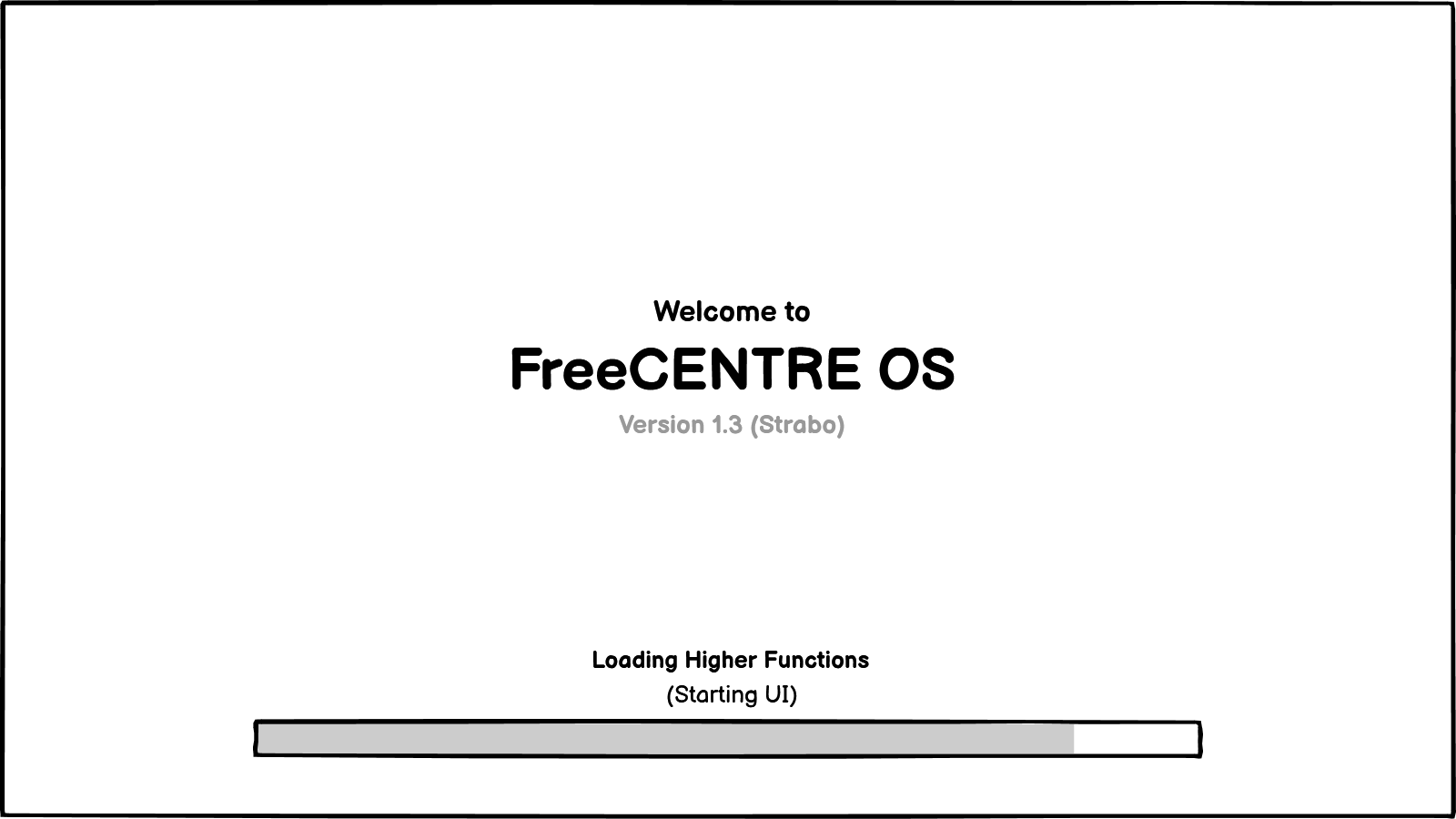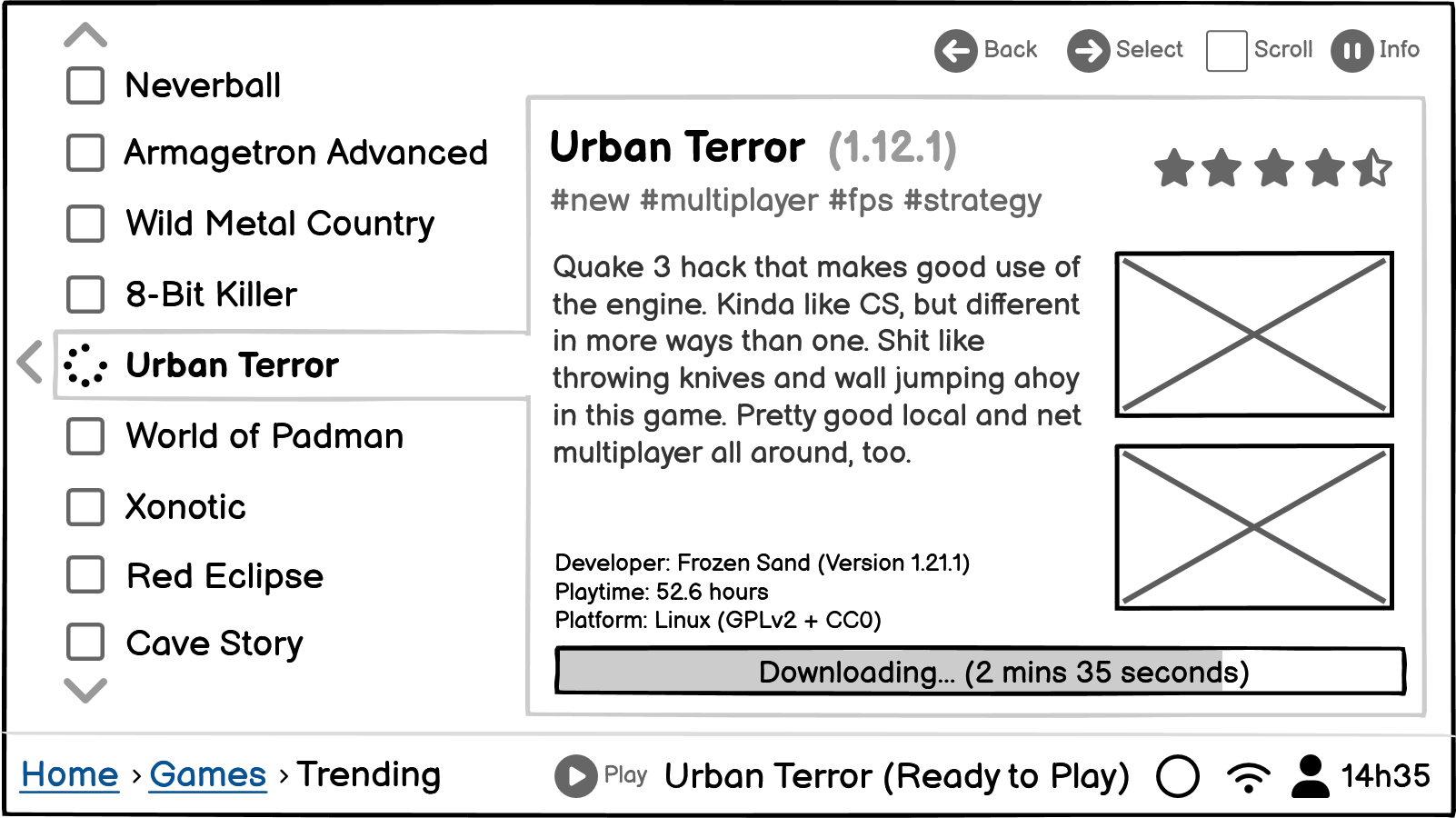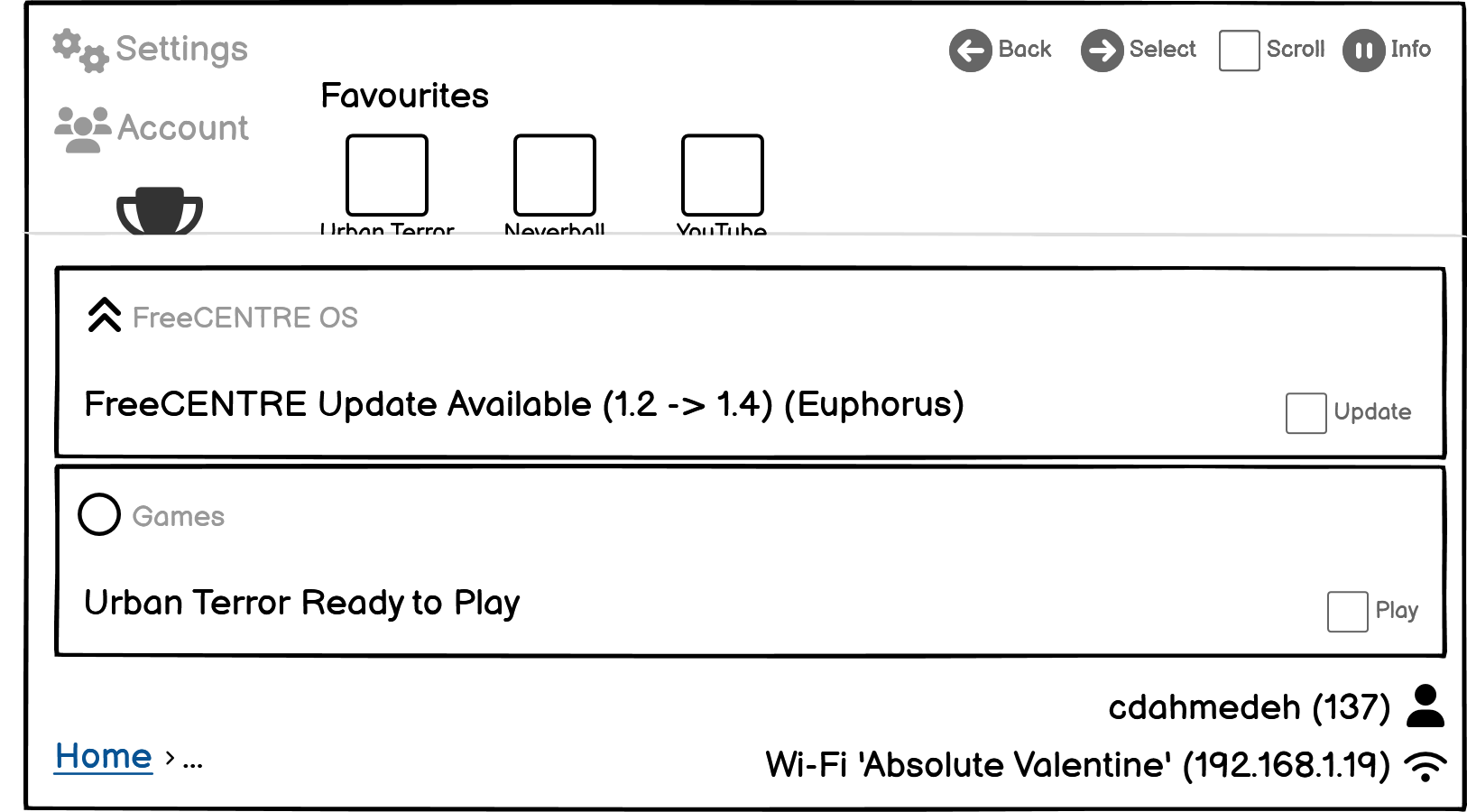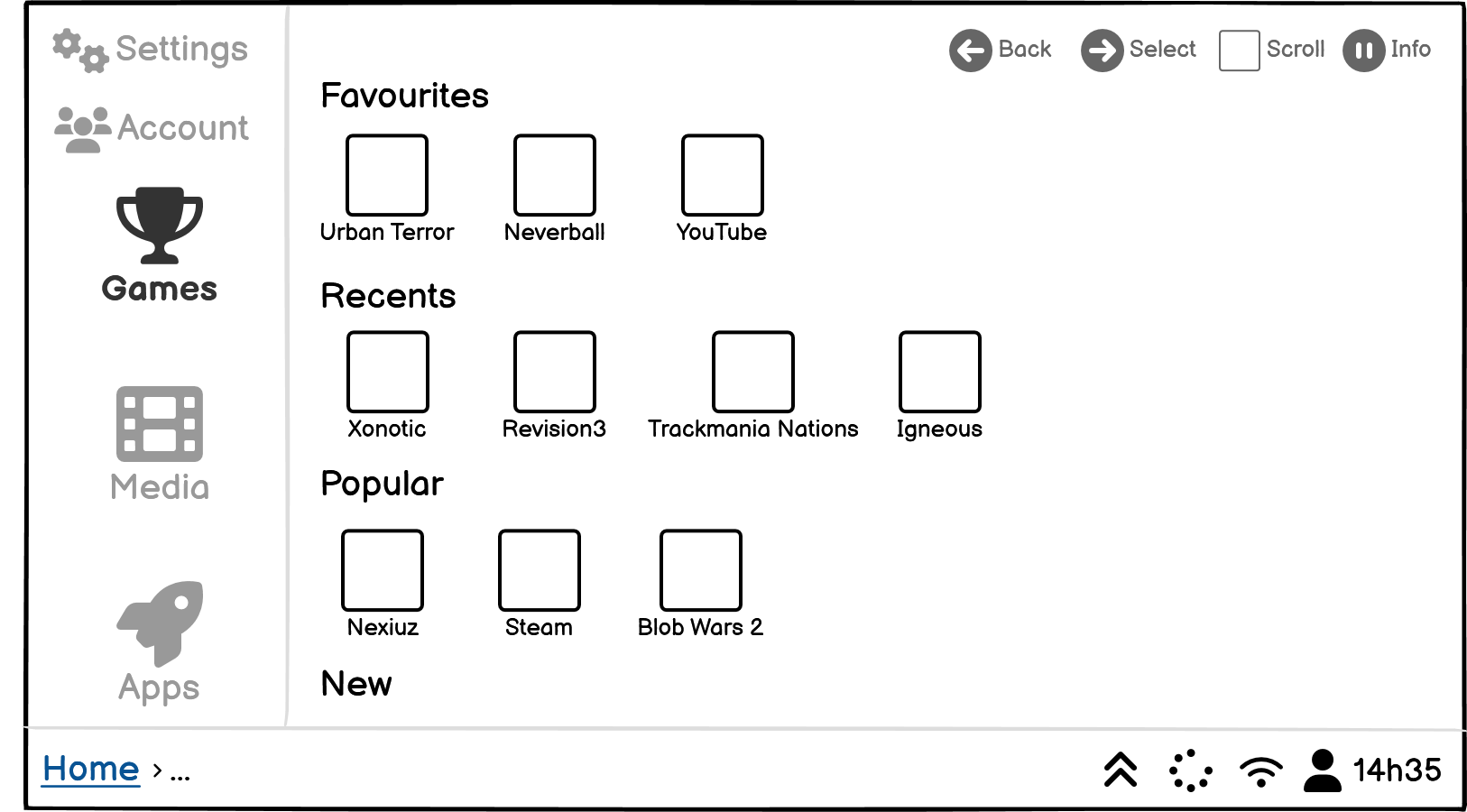When I picture a typical land party, I imagine a bunch of passionate geek gamers bringing in their massive desktop weapons or laptop desktop replacements. Machines with powerful GPUs enough to run NASA spacecraft and cost as much as one.
An AI-generated image of a LAN Party on the Highway
However, what if your peers only have modest machines with an integrated GPU? Essentially, a 'normal' laptop. Imagine hosting a party with those, no one will be able to run these modern demanding games and no one will be enjoying the slideshow and crashes in their games.
So I'm including here a bunch of games that can run on a potato but still provide a fun experience without the need of a 20-pound computer. Of course, no one is going to be wowed by the presentation, but fun will ensue anyways.
I came up with a few arbitrary criteria that these games should have. First, the game must be less than 25$ CAD and easy to procure online. It must run on my mule netbook Latitude 3190 that only has an Intel UHD Graphics 600 as the iGPU reasonably well and be playable. Also, it needs to run on Windows, macOS and Linux either natively or via some compatibility layer like Wine or Proton.
Finally, I won't try to make the list exhaustive, however, I do want to try and make some variety with some genres. Not every party game needs to be a first person shooter. One more rule is that I will only include one game per genre. But, I will leave a list of games that are similar without description.
Quake Live - First Person Shooter
Classic FPS arena shooters games I find to be an enjoyable because of how easy and accessible they are. No fiddly mechanics or complicated rules. However, it still comes with a ton of customization options and almost a hundred maps. Several games modes like Free-for-All and Capture-The-Flag will keep the replayability high. A game that will easily take over even the longest marathon LAN parties.
It is available on Steam for 10.99$ CAD and I've been able to run it even on my backup 10 year old desktop that runs Linux through Valve's Proton.
Similar Games: Counter-Strike, Xonotic, Cube 2: Sauerbraten, Red Eclipse, Warsow, World of Padman, Urban Terror, Halo CE
Live for Speed - Racing Simulator
I've never been to a session where people were playing racing games, apparently the genre isn't popular with the typical comic-book geek. However, they provide a very difficult challenge of keeping a car on the road and for some hilarity on turn one T1 where everything goes wrong.
Live for Speed has been in development for over 20 years and the developer has maintained its modest graphical style so it runs even on lower-spec systems Scawen even tests that his game runs on Wine.
While it works pretty well with a mouse and keyboard, a gamepad is recommended for more precise control.
LFS comes free as demo version which includes, in my opinion, the best track in the game, Blackwood, and two very well-balanced road cars. The full game is a bit expensive at ₤36 but I'm including it here because the demo has enough content to keep the fun going for hours.
Similar Games: Speed Dreams, rFactor 1
0 A.D. - Real-Time Strategy
I know almost nothing about Real-Time Strategy games because I have no idea how to play them. However, I know that they are extremely popular, especially in Asia. Player of these types of games are extremely competitive and parties all over the world are hosted just to fight for the win.
Unfortunately, I don't play RTS games but I totally understand the appeal so my experience is a bit shallow and heavily relied on research to find some of the best games.
0 A.D. is completely open-source and free, and runs on multiple platforms including Windows, macOS and Linux. Amazingly, it is still being developed to this day.
Similar Games: Warzone 2100, League of Legends, Dota 2, StarCraft, Age of Empires 2, Brood War
Tabletop Simulator - Board Games
Board games can be a fun way to spend some quality time with friends but you need the actual set. Also, you can't play with people across the world. This is where Tabletop Simulator comes in, a physics sandbox designed to emulate board games.
The game has so much expandability with a massive repository on Steam's Workshop so you'll be hard pressed to not find a board game that you and your friends will like. Remember, however, it is up to you to implement the rules and TTS doesn't have an engine that keeps track of the rules. So that means, you can flip the board out of anger with no consequence.
Tabletop Simulator sells at 21.99$ CAD on Steam but you can buy four copies for 66.49$ CAD. It runs natively on all three major platforms.
Similar Games: Zillion of Games 2
Garry's Mod - Physics Sandbox
What happens when you take a masterpiece game like Half-Life and remove all the rules and story from it. You end up with an incredibly entertaining sandbox where you can do whatever you want.
This is the kind of game where you create your own fun whether you want to blow things up, make a Rube Goldberg machine or set fire to wooden structures. Of course, it comes with full Steam Workshop support where you can find thousands of props, maps and weapons limiting things to only your imagination.
Garry's Mod is available on Steam for 10.99$ though I also recommend getting Counter-Strike Source along with it because some of the props and addons need them. It runs natively on Windows, macOS and Linux.
Similar Games: Minecraft
open.mp (GTA: San Andreas) - Open-World
Grant Theft Auto, for those who lived under a rock, is a open-world game that combines multiple elements from different genres such as FPS, beat-em-up and driving. Essentially, you're a criminal that is yielded weapons and have the ability to steal cars and drive. Most people play in a sandbox mode where they do whatever they want such as wrecking havoc in the city while there is also a story mode which follows an action-adventure style playing essentially as a criminal.
While GTA V is one most of the popular multiplayer games according to the Steam statistics, it still needs a pretty decent machine to run. However, GTA multiplayer experiences did exist before for San Andreas with the SA:MP mod. The mod was left stagnant eventually but fortunately a group of open-source developers came up with open.mp as a drop-in replacement to continue these tantalizing multiplayer experiences.
Unfortunately, San Andreas isn't available through the normal means anymore so you either need to buy a physical copy off eBay or get it through other means. It runs well under Wine on macOS and Linux. In fact, the game is so modest in it's requirements that there are versions for mobile.
Alternatives: Midtown Madness 2
RetroArch Netplay - Classic Games
For your classic gaming fix, you can still enjoy an amazing multiplayer experience with friends. And since emulators run classic systems, you don't have to worry about performance. There's a huge selection of great games for various consoles. I'm plugging in my TopRoms Collection to get you started.
RetroArch and other emulators like Dolphin have made it extremely easy to set up Netplay, a multiplayer program for emulators, as easy as picking a room from a lobby interface just like many other multiplayer games. This used to be incredibly complicated but now its headache free.
The emulator is available here for free and it's fully open-source. Not only does it run on Windows, macOS and Linux but also mobile platforms like Android and dozens of other systems.
Armagetron Advanced - Snake Game
What happens when you take Tron and turn into a fast-paced arcade snake game? You get Armagetron Advanced, where you play in a 3D arena driving futuristic bicycles leave a trail of walls behind you. Try to trap your opponents into them and don't crash into yours or that of others.
There's not much to say about the game due to its simplicity. It comes with excellent netcode so it will run even on poor networks. The game is open-source and free, running on all three major platforms.
OpenRCT2 - Tycoon
This is a game that has a special place in my heart mostly due to the nostalgia factor. However, building a theme park is quite an enjoyable experience for me. There are so many types of props that you can make your park as fanciful or simple as you want.
OpenRCT2 is a reimplementation of RollerCoaster Tycoon 2 with multi-platform support, increased stability and a neat multiplayer feature.
In order to run OpenRCT2, you need a copy of the original game that you can get from Steam for 10.99$ or DRM-free from GOG for 8.13$. Of course, it runs on all three major platforms.
Alternatives: OpenTTD
YSFlight - Flight and Combat Simulator
Flight simulators are typically games that need a ton of horsepower to run due to their amazing graphics and complex and realistic gameplay. However, one developer, Soji Yamakawa, in the very late 90s, thought that there should be something more accessible.
Enter YSFlight, a combat flight simulator that has very simple graphics and sound but still provides the same kind of fun of flying in the air in addition to its combat mechanics. Setup is minimal, simply requiring you to pick your plane and map, and you’re good to go. It will also recognize your joystick quite quickly too!
YSFlight is available for all three major platforms and has been recently open-sourced. You can get many addons from here.
Alternatives: FlightGear, IL-2, Falcon
OpenLieroX - Artillery
Imagine the Worms game, but in real-time. This is what you get, OpenLieroX. It is based on the original Liero game but with a ton of extra maps and weapons.
Dig your way through a sand trap or use your weapons to make a big opening with a bomb explosion. Frag the other players in the free-for-all mode or play in teams. It is fun that will last for a really long time.
OpenLieroX is open-source and free, running on all three major platforms.
Alternatives: Teeworlds, Warmux, Worms Series
tetr.io - Falling Puzzle Game
I still have memories of the flash game Tetris Friends, an official version of the game with multiplayer support and a ton of single-player challenges. The controls were very solid generating some very exhilarating and exciting gameplay. Unfortunately, a few years ago, it was shut down.
The spiritual resurrection came out a few years ago as tetr.io bringing back essentially most of the gameplay of the defunct Tetris Friends. The presentation is excellent with your choice of relaxing or intense music and so much customization. It features excellent single player modes that keep track of your progress while also allowing you playing the game with other people on the Internet. The dynamics follow the official Tetris guidelines.
Tetr.io runs on the browser though there is a desktop version that again, runs on all major platforms.
Alternative: A List of a ton of Tetris Clones
Conclusion
So there you have it, a list of games to consider for your next friendly LAN party. However, since these games are not demanding, your party room won't turn into a sauna and people can bring in their regular laptops with the platform of their choice.
I tested all the games on my mule that I mentioned earlier. It runs a derivative of Arch Linux and was able to play all the games on it pretty smoothly. On my actually daily driver, which still has an integrated GPU, it doesn't break a sweat.
I hope you enjoyed this list and inspired you to run your own casual people friendly LAN party! If you have some suggestions of your own, feel free to leave a comment below and share with the community!

